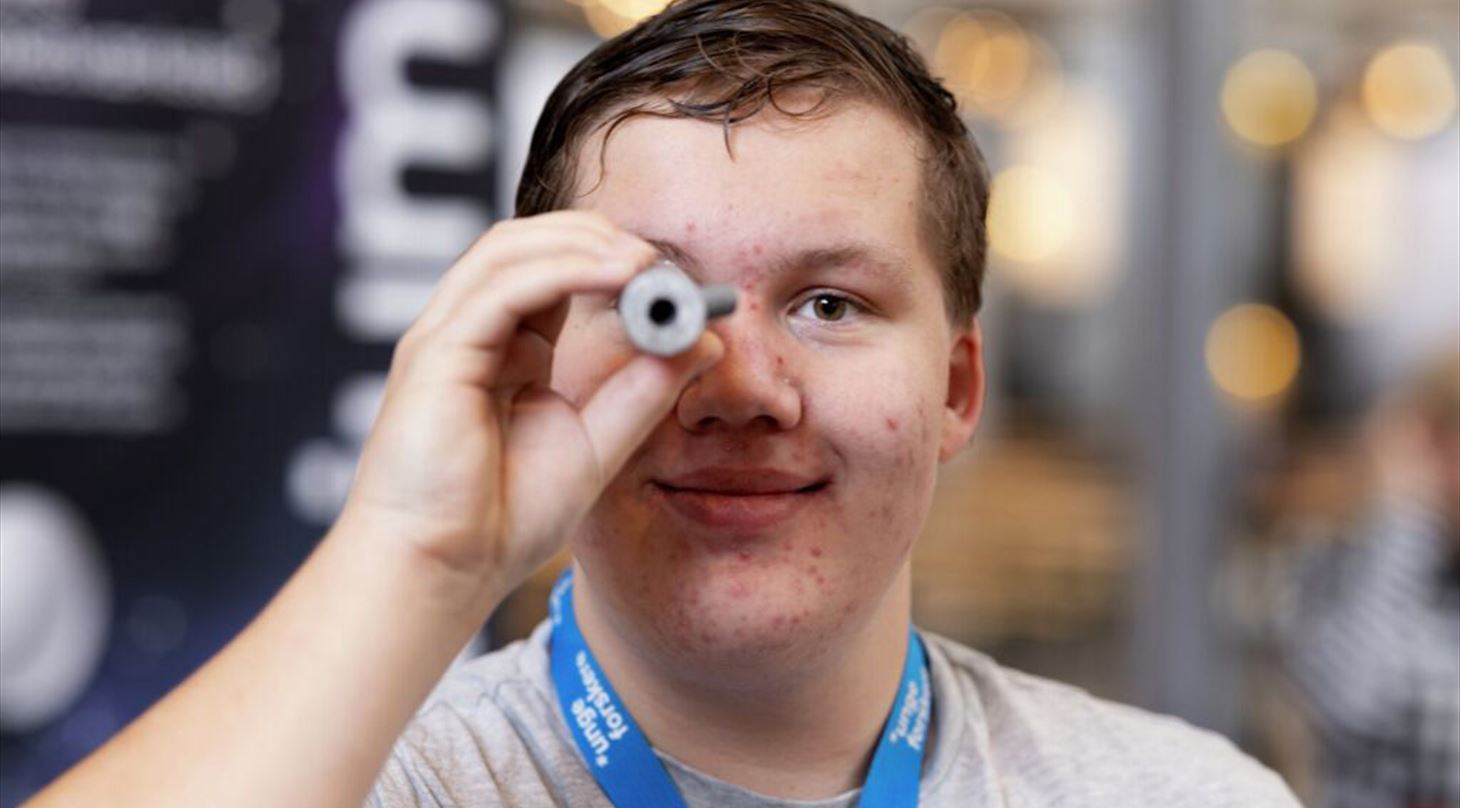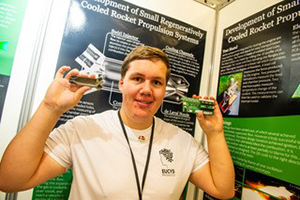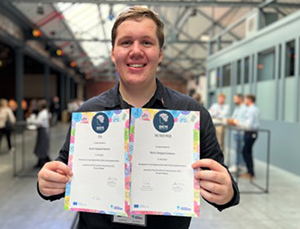
High school student wins talent competition with 3D print from the Danish Technological Institute
Image: Ungeforskere.dk
The Danish Technological Institute has 3D-printed a mini rocket engine for Martin Sørensen's participation in the Young Researchers talent competition. A competition that the third-year student ended up winning.
Young Researchers is Denmark's largest scientific competition, where primary and high school students compete with their self-selected projects in the fields of Science and Technology.
One of the high school students who participated this year was Martin Sørensen from Odense Gymnasium, in the Technology category, with a mini rocket engine he had designed himself and then was 3D-printed at the Danish Technological Institute.
With the 3D-printed mini rocket engine, the third-year student could win the finals after the preliminary rounds of the talent competition.
 Rocket Engine on a smaller scale
Rocket Engine on a smaller scale
Students participating in Young Researchers compete in one of three categories: Life Science, Physical Science or Technology.
Martin Sørensen chose to participate in the Technology category with a project to build a small regeneratively cooled rocket engine, which uses some of the fuel from the rocket engine to cool it down, preventing it from melting.
He chose this project because he wanted to make small liquid-fuel rocket engines more accessible to amateurs.
- This is also how it's done in large rocket engines used by NASA and SpaceX. My focus was just to do it on a much smaller scale so that the technology could be used in small satellites and amateur rockets, says Martin Sørensen.
3D Printing solves the challenge
To build his own mini rocket engine, Martin Sørensen had to write his own computer program to design the rocket engine. And here, Martin Sørensen realized that 3D printing was necessary to bring the design to life.
- I wrote my own computer program from scratch that can simulate how hot it gets inside the rocket engine to design how the cooling channels should look. Based on that, I realized that the channels were too small, the tolerances were too high, and the geometry was too complex to be practical to produce using methods other than 3D printing, Martin Sørensen explains.
Because of the design freedom with 3D printing, collaboration with the Danish Technological Institute came into play.
I contacted the Technological Institute and asked if we could work something out, and it was fantastic that it was possible. They printed my design the day after I sent it, so it went really fast
- Martin Sørensen
First place - also in the European competition
As a result of taking the first place in the Danish competition for Young Scientists, Martin qualified for the EUCYS in Bruxelles this September. Here, he competed against other young scientists in the category “Engineering” with his 3D printed mini rocket engine.
 The opponents were winners from other European countries as well as winners from USA, Canada, China and South Korea. After a thorough assessment by the jury, consisting of international researchers, he was, once again, assigned the first place for the mini rocket engine.
The opponents were winners from other European countries as well as winners from USA, Canada, China and South Korea. After a thorough assessment by the jury, consisting of international researchers, he was, once again, assigned the first place for the mini rocket engine.
Preparations and a new mini rocket engine
Before the EUCYS Martin prepared for hard competition by further adjusting the design of the mini rocket engine.
-I did some tests on the prototype on a static launching pad to measure the strength, temperature, and fuel tank on the rocket engine.
 An amazing experience - meeting young international scientists
An amazing experience - meeting young international scientists
-It was cool meeting other young scientists from all around the world. Just talking to other people who share the same interests and hearing about their projects and research was inspiring,” Martin explains.
The assessment was based on two aspects: An oral presentation in front of the international researchers and a scientific report, that accounts for the theories used.
The redesigned 3D printed rocket engine won first place. As if that wasn’t enough, Martin also won an extra prize. A trip to ESA in Holland – which he is very excited about.